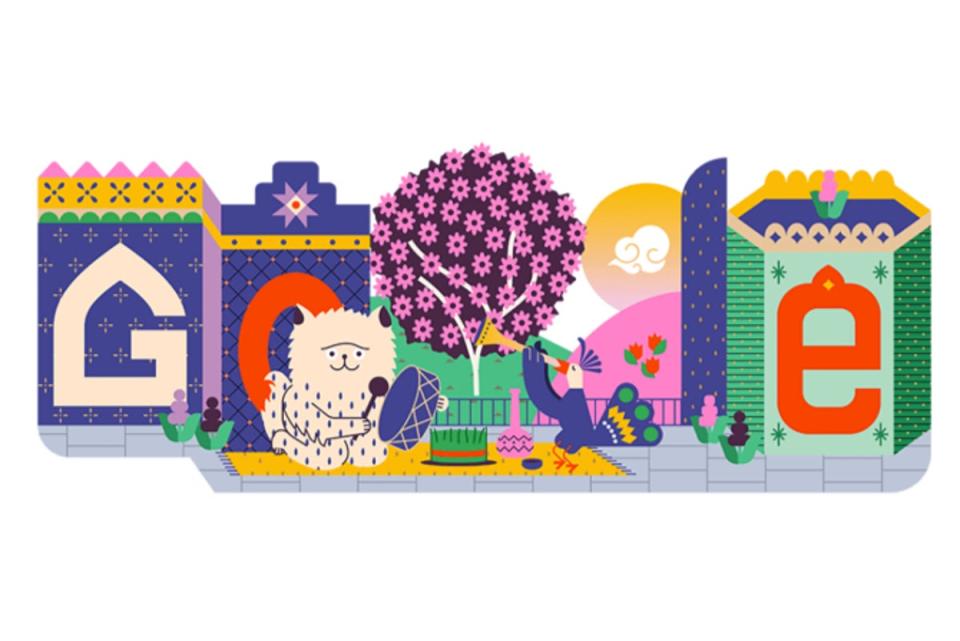Google Doodle celebrates the 3,000 year old tradition Nowruz

Happy Nowruz 2024! Google Doodle is celebrating the 3,000-year-old, worldwide festival with a sketch that promotes joy and the coming of a new spring.
Nowruz is a tradition that dates back at least three millennia with its earliest roots in ancient Iran – then Persia.
But over the years, the tradition spread among communities on the Silk Roads and became a celebration for multiple countries and ethnic groups.

Nowruz, meaning “new day”, celebrates the new spring season each year, falling on the spring equinox to commemorate the start of the blooming season.
This year, the March equinox, or the ventral equinox, lands on 19 March 2024 at 11.06pm EDT or 20 March at 6.36am in Tehran, according to BBC News.
The equinox is the astronomical end of winter and the start of spring; as the daily periods of sunlight continue to lengthen, the periods will change at their fastest around the equinox.
More than 300 million people worldwide will be celebrating Nowruz, each with differing traditions that vary depending on country and community, as the celebrations have been adapted and developed over time.
One of the main ideas of Nowruz is celebrating the seasonal rebirth that spring symbolises and the renewal of nature.
Values such as peace, prosperity, respect and solidarity between generations and within families, as well as strengthening ties with neighbours and communities, are upheld during this festival.
The doodle commemorating this celebration was illustrated by Iranian guest artist Pendar Yousefi.
Mr Yousefi told Google Doodle that Nowruz traditions differ across many communities, so he had to do a lot of research into Nowruz customs and artistic traditions to try and encapsulate that in his artwork.
“I decided to use the visual language of illuminated manuscripts as the anchoring theme since that’s part of the artistic heritage across the regions that celebrate Nowruz,” Mr Yousefi said.
The artist was inspired by his own happy childhood memories of Nowruz, using animal friends to evoke joy and togetherness.
In the sketch, animals sit in a flower-filled courtyard under a blossoming tree, ringing in the coming of spring.
“Even in challenging times, the spirit of Nowruz - the promise of renewal and a ‘new day’ on the horizon - offers a beacon of hope,” Mr Yousefi added.
The tradition dates back to at least the 6th century BCE, with some of the festival’s earliest origins lying in Zoroastrianism. The return of spring was seen as spiritually significant, symbolising the perseverance of good over evil, UNESCO said.
As the tradition travelled along the Silk Roads, the festival has been adapted into various local celebrations and narratives.
Cultural activities, such as publishing and reciting poetry, playing folk songs, performing traditional dances, and holding open-air festivals, are practised in many countries.
One of the most important and widespread traditions during Nowruz is the Nowruz Table, where families gather together and set out symbolic items – such as water, candles, traditional dishes of green sprouts and crushed wheat sprouts, mirrors, eggs and various fruits – according to UNESCO.
The objects symbolise different values, such as purity, brightness, abundance, and happiness.
The table in Iran is known as the Sofreh-ye Haft Sin and will display seven objects starting with the letter “S”.
In 2010, the United Nations General Assembly recognised 21 March as International Nowruz Day.

